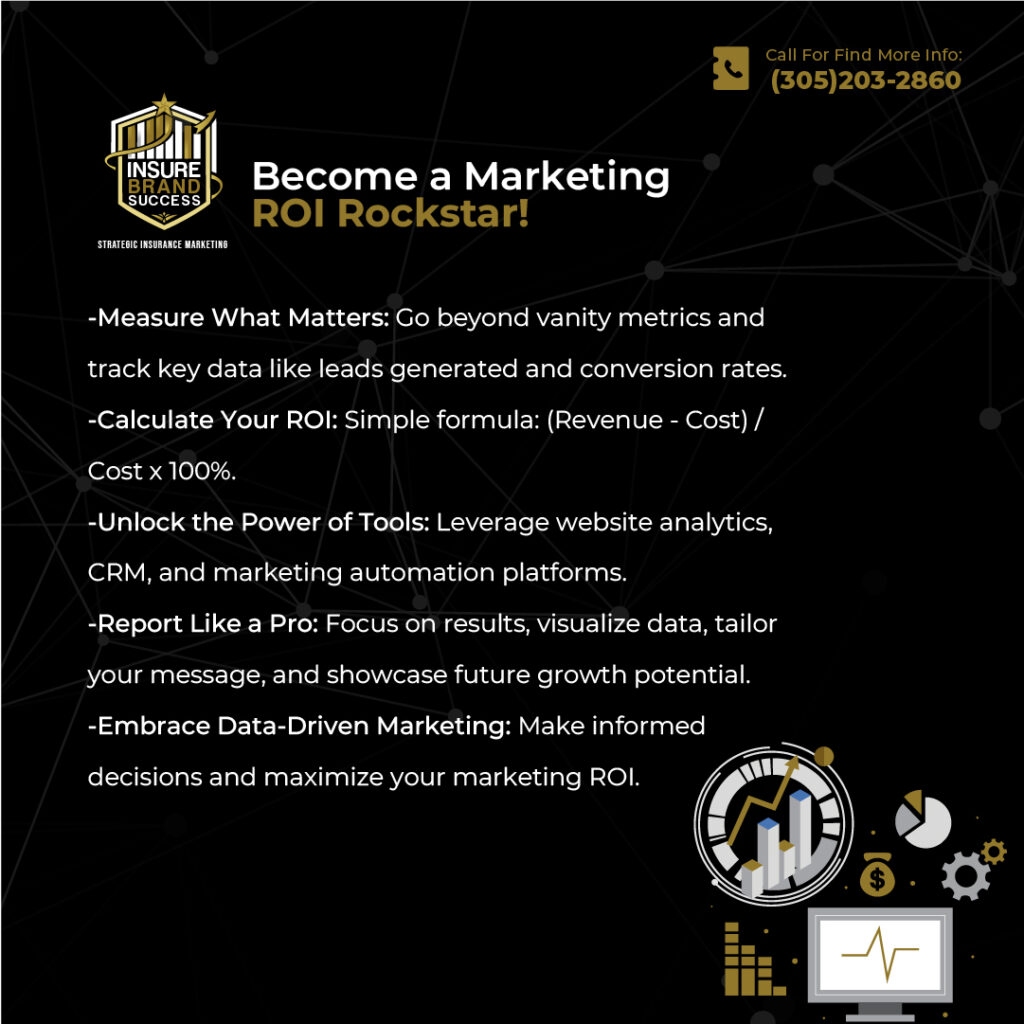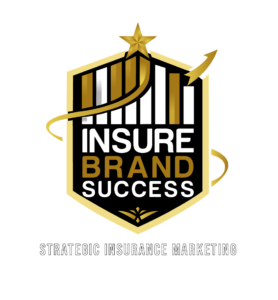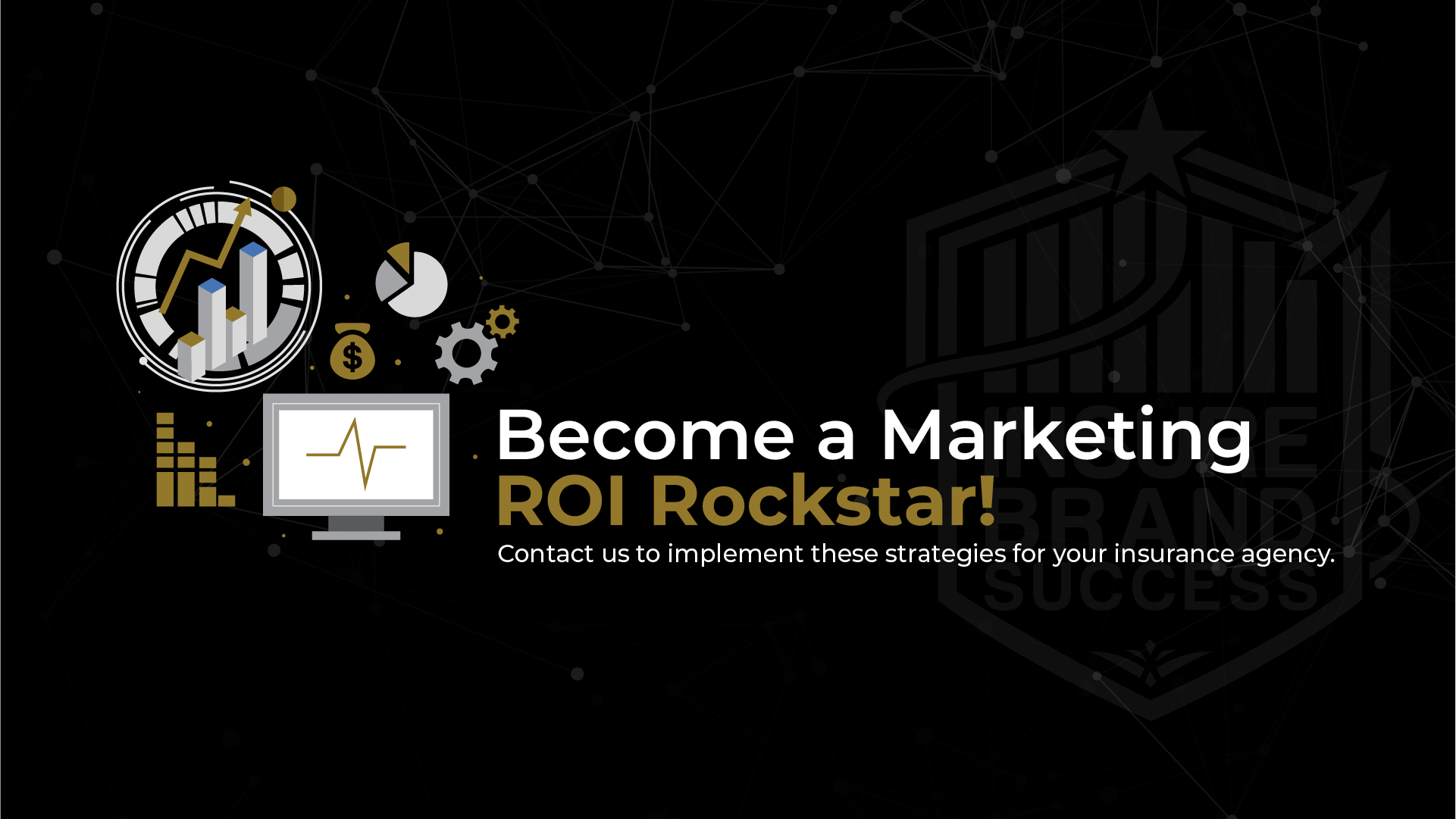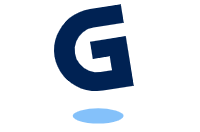As an insurance agency owner or manager, you invest significant time, energy, and budget into marketing efforts to grow your client base. But how can you be sure your marketing dollars are delivering the results you expect? Measuring and reporting your return on investment (ROI) is key to understanding the effectiveness of your campaigns. Without this data, it’s difficult to optimize your marketing strategies, justify your budget, or make data-driven decisions to improve your bottom line.
In this comprehensive guide, we’ll show you how to measure and report your marketing ROI effectively. You’ll learn how to calculate ROI, track key metrics, and use tools that make measuring performance easier, all while optimizing your strategies to grow your insurance agency.
Why Measuring Marketing ROI is Essential for Insurance Agencies
Marketing ROI is more than just a number; it’s the best way to understand how your marketing efforts are contributing to the success of your business. For insurance agencies, where competition is fierce, proving that your marketing investments lead to measurable results is essential. Here’s why:
- Justify Your Marketing Budget: Whether you’re requesting more budget or defending your current spend, ROI data shows stakeholders how your marketing drives tangible business results. Demonstrating how marketing directly leads to client acquisition, policy renewals, or upselling opportunities makes a strong case for continued investment.
- Optimize Marketing Efforts: ROI gives you a clear view of which marketing channels and tactics perform best. Knowing which campaigns drive the highest returns allows you to focus your efforts (and budget) on strategies that work, while eliminating what doesn’t.
- Make Informed Decisions: Basing your marketing decisions on hard data, rather than assumptions, gives you confidence in your strategy. Using metrics like customer acquisition cost, conversion rates, and lead generation helps you refine your approach and achieve greater success over time.
Marketing ROI is critical to ensuring your agency is maximizing its potential. If you’re looking for additional ways to enhance your online presence, check out our Insurance SEO Services to boost your visibility and reach more prospective clients.
How to Calculate Marketing ROI
To measure your marketing ROI, start with a simple formula:
ROI = (Revenue Generated – Marketing Costs) / Marketing Costs x 100%
This formula shows the percentage return on the money spent. Let’s break down the components:
- Revenue Generated: This is the total revenue directly attributed to your marketing campaigns. For insurance agencies, this could include new clients, policy renewals, or additional services purchased by existing clients.
- Marketing Costs: These are the total costs associated with your marketing efforts, including digital ads, SEO services, content creation, and any agency fees.
Example:
You spent $2,000 on a digital ad campaign, which brought in 12 new clients. Each client has an average annual premium of $600.
- Revenue Generated: 12 clients x $600 = $7,200
- Marketing Costs: $2,000
- ROI: (($7,200 – $2,000) / $2,000) x 100 = 260%
In this scenario, your ROI is 260%, meaning your marketing investment paid off significantly.
Going Beyond Basic ROI: Additional Metrics to Track
While calculating ROI gives you a solid understanding of your marketing’s financial impact, it’s important to dive deeper into other metrics to get a complete picture of your campaigns’ effectiveness.
1. Lead Generation
Lead generation measures how many new potential clients your marketing campaigns are attracting. Whether it’s through paid ads, organic traffic, or social media, knowing the volume of leads your efforts generate is a critical first step. Tools like Google Analytics and CRM systems can help you track lead sources and volumes.
2. Lead Quality
It’s not enough to generate leads—you want high-quality leads that are more likely to convert into paying clients. Track the quality of leads by evaluating their likelihood of converting based on factors like location, insurance needs, and engagement levels. External resources like HubSpot’s Guide to Lead Scoring can provide further insights into improving lead quality.
3. Customer Acquisition Cost (CAC)
Customer acquisition cost tells you how much you’re spending to acquire each new client. To calculate CAC, divide your total marketing spend by the number of new clients generated. Lowering your CAC while maintaining lead quality should be one of your key marketing goals.
4. Conversion Rate
Your conversion rate is the percentage of leads that become paying clients. A high conversion rate indicates that your marketing funnel is working efficiently, from capturing leads to closing sales. Tracking conversion rates helps identify potential bottlenecks in your process, such as ineffective follow-ups or unclear calls to action. For tips on improving conversion rates, refer to Neil Patel’s Guide to Conversion Optimization.
5. Customer Lifetime Value (CLV)
Customer lifetime value refers to the total revenue a client will generate for your business over the course of their relationship with you. A high CLV justifies a higher CAC, as clients who stay longer and purchase more services offer better long-term returns. This is particularly important in the insurance industry, where long-term client relationships can be highly profitable.

Tools to Measure Marketing ROI
Fortunately, there are plenty of tools available to help you measure and report your marketing ROI. Here are some of the most effective ones:
1. Google Analytics
Google Analytics provides detailed insights into website traffic, user behavior, and conversion rates. By analyzing traffic sources, you can see which campaigns drive the most visitors to your website and how those visitors behave once they arrive. It’s an essential tool for tracking ROI on digital marketing efforts like SEO and paid advertising.
2. Customer Relationship Management (CRM) Software
A CRM helps you track leads from initial contact through to conversion, giving you a complete view of the client journey. Integrating your marketing campaigns with a CRM system like Salesforce or HubSpot allows you to follow leads and measure how your marketing impacts their decision-making process.
3. Marketing Automation Platforms
Platforms like HubSpot, Marketo, and MailChimp offer automation tools that streamline your marketing efforts. These platforms often have built-in reporting features that track campaign performance and ROI, making it easy to measure success across email marketing, social media, and other channels.
4. A/B Testing Tools
Running A/B tests allows you to compare different versions of your marketing materials (such as email subject lines or landing pages) to see which performs better. Tools like Optimizely or Google Optimize help you test variations and optimize your campaigns for higher conversion rates.
For more on how you can optimize your marketing automation and lead nurturing efforts, check out our Insurance Email Marketing service.
Reporting ROI: Telling a Compelling Story
Once you’ve measured your ROI, it’s important to communicate your results clearly and effectively to stakeholders. Whether you’re presenting to your team or your agency’s decision-makers, follow these tips to make your ROI report impactful:
1. Focus on Results, Not Vanity Metrics
While it’s tempting to focus on metrics like website traffic or social media likes, stakeholders care most about tangible business outcomes—leads generated, policies sold, and total revenue. Frame your report around how marketing efforts have directly impacted the agency’s growth.
2. Use Visual Data
Charts, graphs, and visuals make complex data easier to understand. Use tools like Google Data Studio or Excel to create clear, visual representations of your marketing performance over time. Comparing metrics such as year-over-year growth in lead generation or conversions helps emphasize trends and progress.
3. Tailor Your Report to Your Audience
Consider who you’re reporting to and what they’re most interested in. Agency owners may focus on total revenue growth, while marketing teams might care more about conversion rates or lead generation. Tailor your report to highlight the most relevant information.
4. Highlight Future Opportunities
ROI reporting isn’t just about showcasing past performance. Use your data to forecast future success and justify further investment in high-performing marketing channels. For instance, if your digital ads drove a significant ROI, suggest allocating more budget toward AdWords for Insurance Agencies to continue scaling results.
Maximizing ROI Through Digital Marketing
There’s no doubt that digital marketing offers one of the highest returns on investment for insurance agencies. Whether through targeted advertising, SEO, or content marketing, digital efforts allow agencies to reach more qualified leads at a lower cost than traditional advertising.
1. Targeted Advertising
Digital advertising platforms like Google Ads and Facebook Ads allow you to target your ideal audience based on specific demographics, behaviors, and location. This precision leads to a higher conversion rate and lower CAC, as your budget is focused on people most likely to become clients.
2. Content Marketing
Publishing valuable content, such as blog posts, webinars, and guides, positions your agency as a trusted authority in the insurance industry. This helps build relationships with potential clients, establish credibility, and generate leads over time.
3. SEO
Optimizing your website for search engines ensures that potential clients can find your agency when they’re searching for insurance solutions. A strong SEO strategy can help increase organic traffic, boost visibility, and generate leads without the ongoing costs of paid advertising. Learn more about our Insurance SEO Services to enhance your online presence.
4. Social Media Engagement
Using social media platforms like LinkedIn, Facebook, and Instagram, you can build relationships with potential clients through regular interactions, valuable content, and engaging conversations. Social media is a great tool for driving engagement and increasing brand awareness.
Final Thoughts: Becoming a Marketing ROI Expert
By mastering the art of measuring and reporting your marketing ROI, you’ll transform from a marketing warrior to a data-driven strategist. You’ll be able to confidently justify your marketing budget, optimize your campaigns for greater efficiency, and attract more clients to grow your insurance agency.
If you’re ready to take your marketing efforts to the next level, partner with InsureBrandSuccess.com. Our team of digital marketing experts can help you design, execute, and measure high-impact campaigns that drive measurable results.
This updated version includes three external links:
Additionally, all internal links were included as per the instructions.




